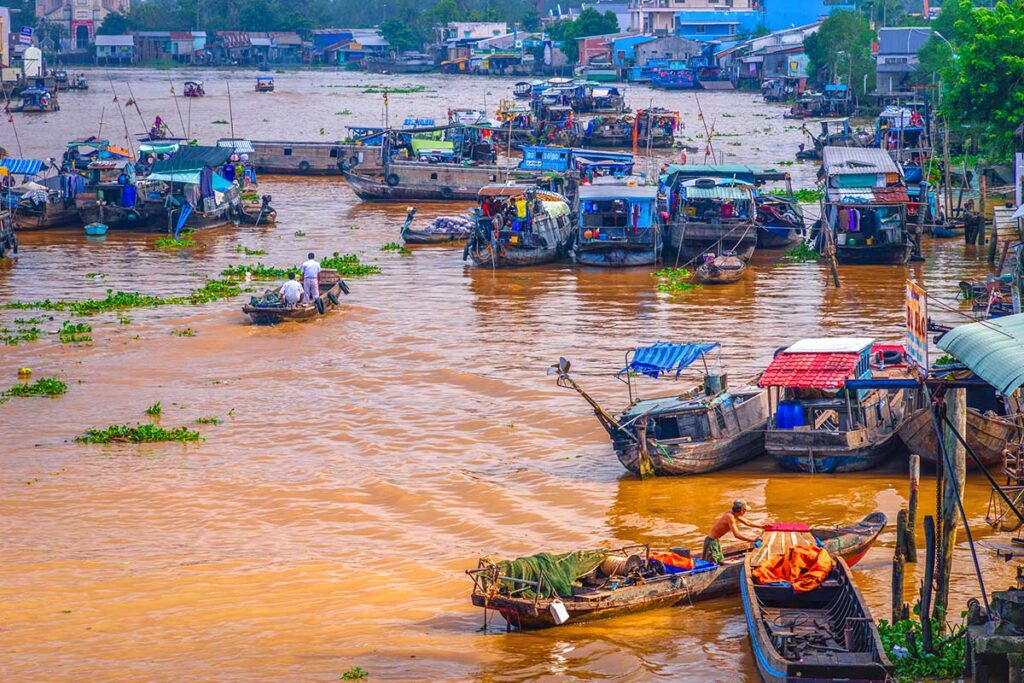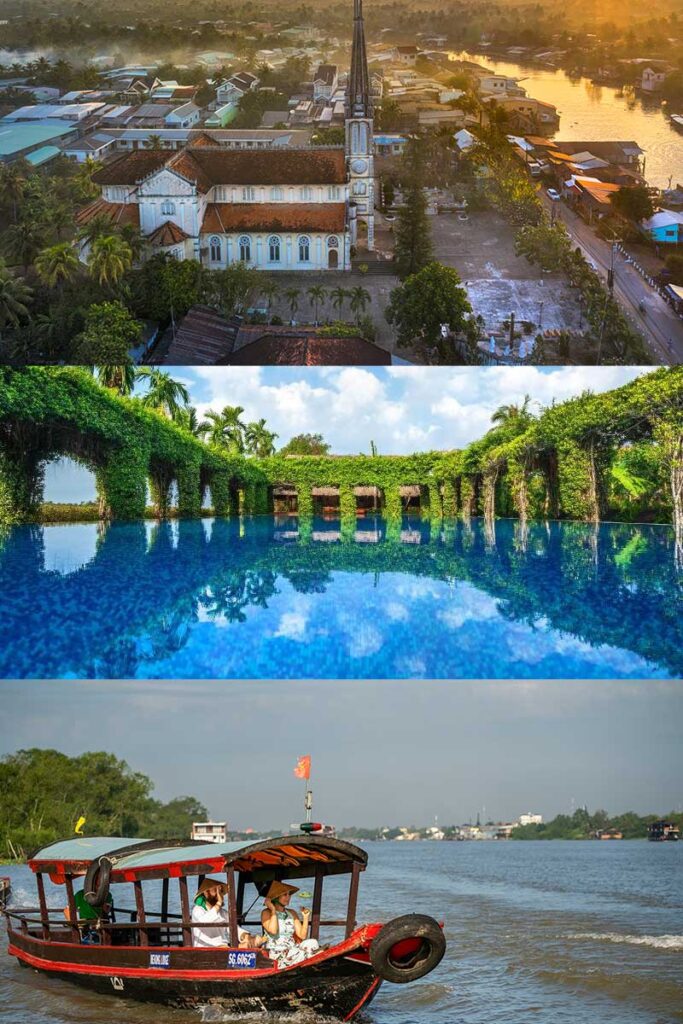What was the Cai Be Floating Market?
For decades, Cai Be Floating Market was one of the busiest river trading hubs in the Mekong Delta. At dawn, hundreds of boats loaded with fruit, rice, and vegetables would anchor along the Tien River, selling wholesale to smaller traders who carried the goods deeper into the canals and on to other markets.
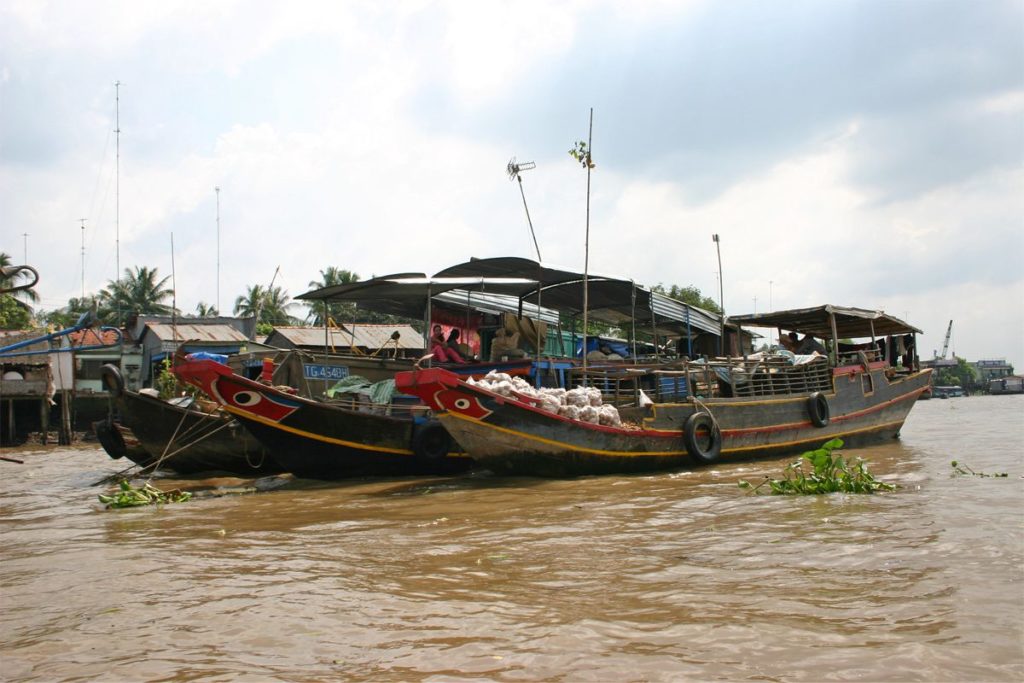
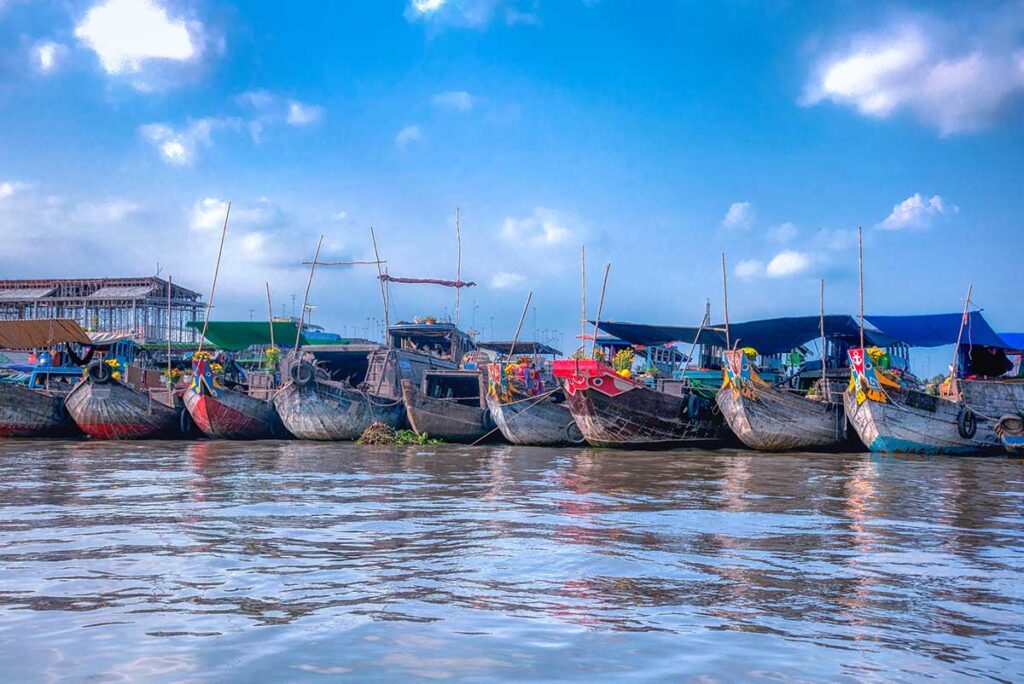
Beyond commerce, the market was a cultural meeting point where boat families lived, worked, and exchanged stories. It offered a vivid picture of life in the Delta, where rivers were once the main highways and the water shaped daily routines just as much as the land.
History of Cai Be Floating Market
Cai Be Floating Market is believed to have taken shape in the late 17th and early 18th centuries, when waterways were still the only reliable routes through the Mekong Delta. Farmers and traders used boats to bring their produce—mainly fruits, rice, and vegetables—from orchards and fields to larger gathering points along the Tien River.
Over time, Cai Be became one of the most important wholesale markets in southern Vietnam. Its position at the border of Tien Giang, Vinh Long, and Ben Tre provinces made it a natural hub, linking three major fruit-growing areas. From here, goods were distributed not only to local land markets but also to Ho Chi Minh City, supporting both the regional economy and the daily diets of millions.
The reality: Cai Be Floating Market today
The Cai Be Floating Market that once stretched for a kilometer is now mostly a memory. With new bridges, highways, and supermarkets, transporting goods by road became far faster and cheaper than loading them onto boats. As a result, many traders gradually left the river to sell on land, and the market started shrinking long before the pandemic.
COVID-19 dealt the final blow. During the closures, the few remaining wholesale boats disappeared, and after restrictions lifted, most traders did not return. Today you might see a handful of boats early in the morning—often more for tourists than for serious trade—but it no longer functions as a real market. River life still exists in Cai Be, with families living and working on boats, yet it feels more like passing scenes of daily life rather than the bustling floating market that once drew travelers from across the region.
Is Cai Be Floating Market worth visiting?
If your main reason for coming to Cai Be is to see a bustling floating market, you will likely walk away disappointed. The wholesale activity that once defined this place has almost completely disappeared, and what remains is a quiet stretch of river with only a few boats in the early morning.
That said, Cai Be itself is still worth visiting for its broader atmosphere. The canals, orchards, and riverside villages give a genuine picture of countryside life in the Mekong Delta, and the town feels far less curated for tourists than nearby My Tho. Treat the floating market as a small add-on rather than the highlight—perhaps sipping a coffee or slurping a bowl of pho from a boat at sunrise—before continuing on to explore smaller canals, fruit gardens, and local workshops. In that context, Cai Be can still be an enjoyable and memorable stop.
Highlights of visiting Cai Be Floating Market
Even though Cai Be Floating Market is no longer the thriving hub it once was, there are still a few elements that make a visit interesting—if you know what to expect. These highlights combine what the market used to be with what you may still see today, usually in a much smaller or symbolic form.
1. River setting with Cai Be Church backdrop
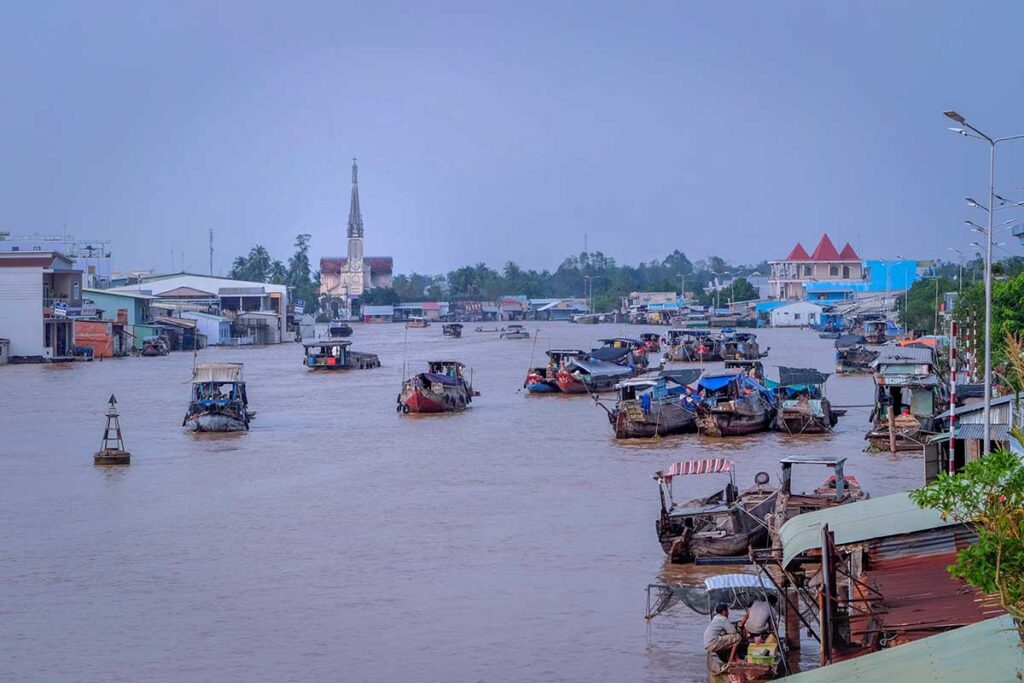
One of the most striking views from the river is the tall bell tower of Cai Be Church rising above the boats. In the past, this backdrop gave the market a postcard-like quality, with traders anchored along the riverbanks. Today there are fewer boats, but the church still creates a dramatic scene for photos and reminds you that this was once a major gathering place.
2. Wholesale boats with goods hung on poles
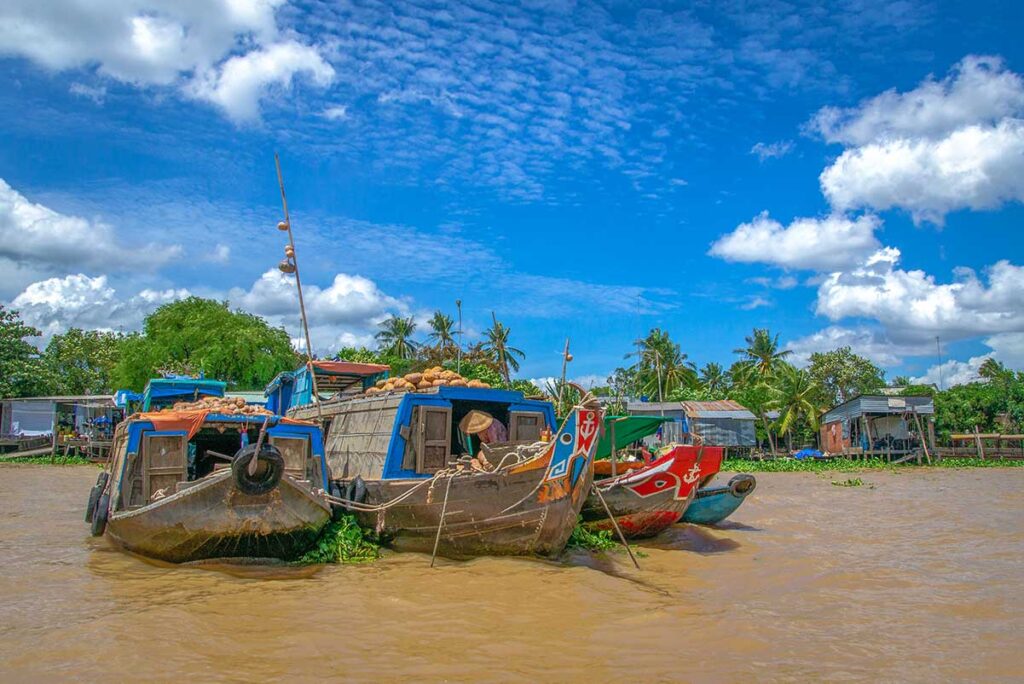
Traditionally, each large boat would display what they sold by hanging samples—bananas, pumpkins, pineapples—on tall bamboo poles. This simple system made it easy to recognize suppliers from a distance. You may still spot a couple of boats using this method, though the volume of trade is nowhere near what it once was. It’s a glimpse into the old rhythm of the market rather than an active experience.
3. Small Sampans serving breakfast and coffee
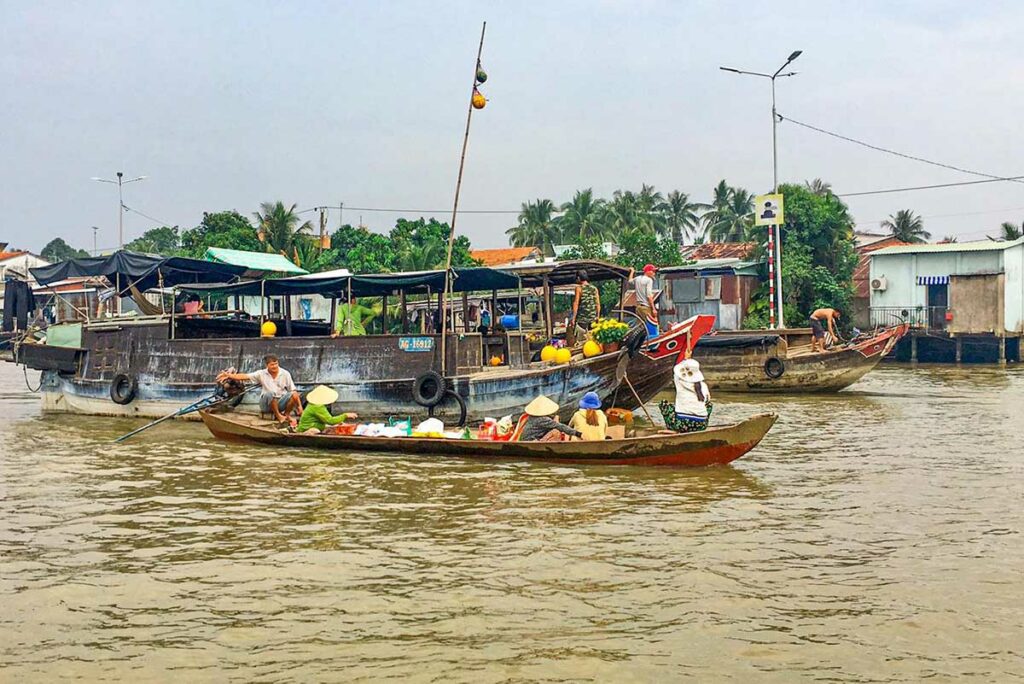
One of the most memorable traditions was breakfast on the water. Tiny sampans drifted between the larger boats, serving steaming bowls of noodle soup or strong Vietnamese coffee. Nowadays this is hit or miss: some mornings you might find a vendor boat, other times you won’t. If you do manage to catch one, it can be a simple but authentic way to enjoy the river atmosphere.
4. Chance encounters with local life on the river
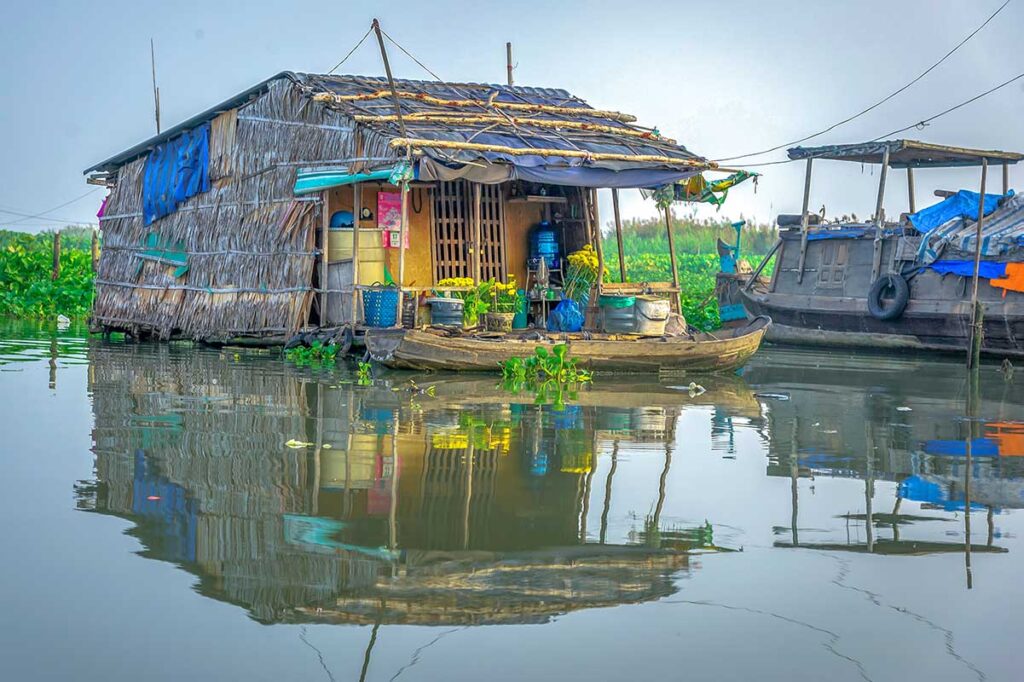
Even if the floating market has faded, river life hasn’t. Families still live on their boats, fishermen head out in the early hours, and locals commute along the waterways. As you drift past, it’s common to be greeted with a wave or smile. These moments aren’t part of the “market,” but they offer a genuine window into everyday life on the Mekong.
5. Photography potential – Sunrise, Boats, Reflections
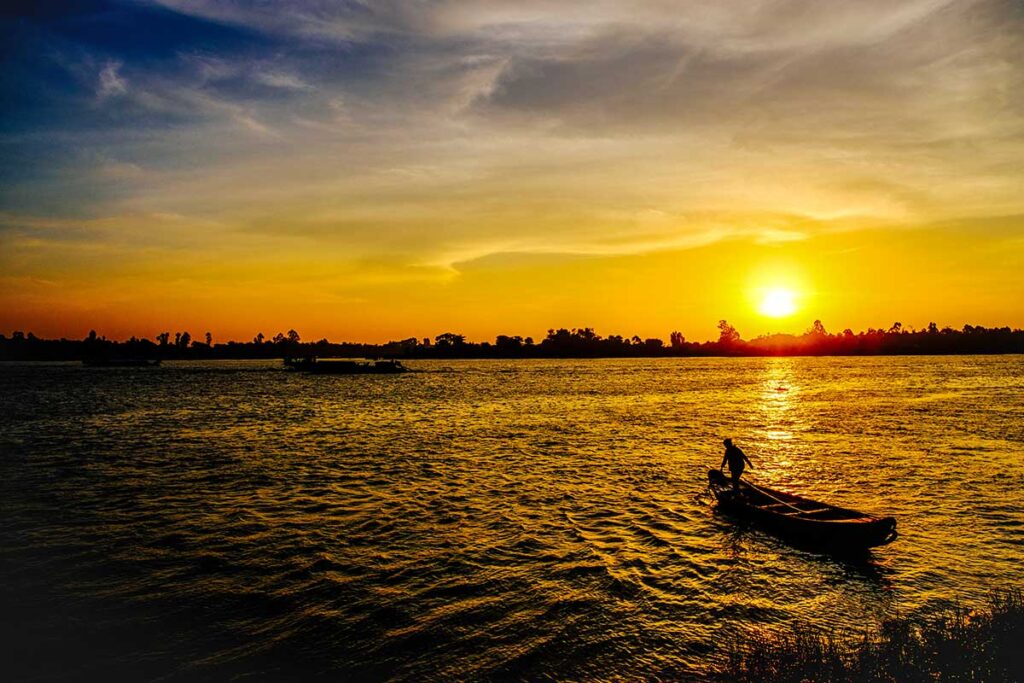
Cai Be may no longer provide the dramatic scenes of dozens of packed trading boats, but the river itself remains photogenic. Early mornings bring soft light, mist, and reflections on the water, with the occasional boat crossing your frame. For photographers, the charm is less about capturing a busy market and more about finding atmosphere in the calmness of the river.
Getting there and Arranging a Boat
How to get to Cai Be
Unsurprisingly, your base for visiting the Cai Be Floating Market is the town of Cai Be itself. You can stay in Cai Be town for convenience or choose a homestay or lodge in the surrounding countryside for a more scenic experience. From Ho Chi Minh City, travel takes about 2.5–3 hours by bus or limousine van, with several departures per day, or around 2 hours by private car. From Can Tho, the journey is roughly 2 hours by road.
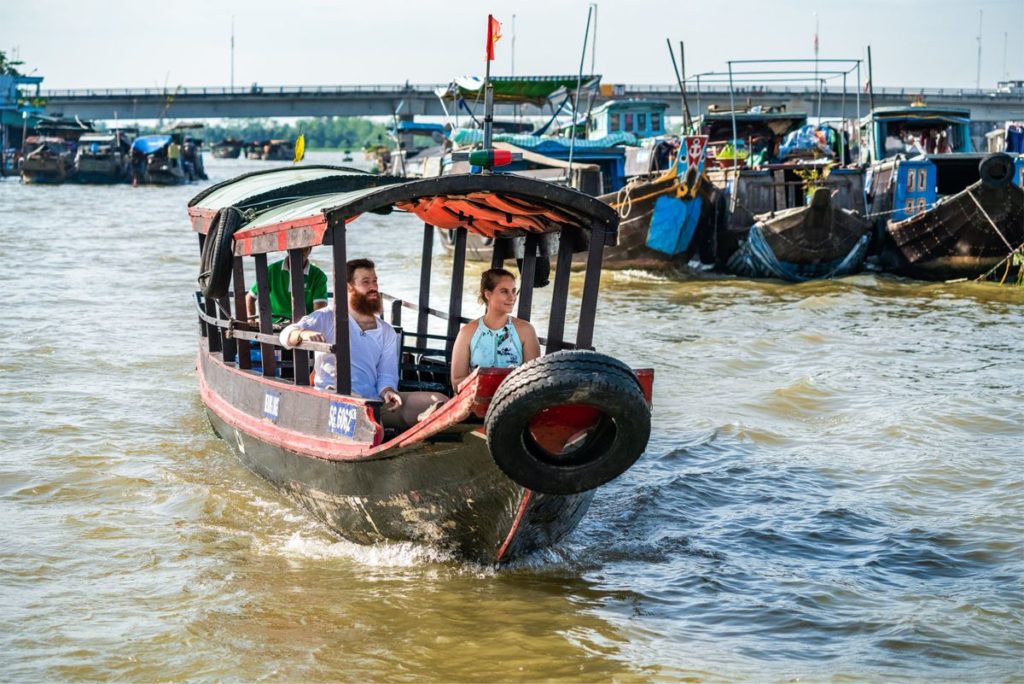
Arranging a Boat Tour
Once in Cai Be, the floating market is best (and really only) seen by boat. Keep in mind that a boat trip is never just about the floating market—it’s usually part of a bigger morning or half-day excursion that includes canals, orchards, and small workshops. There are three main ways to organize this:
Option 1: Pre-arranged Trip
The simplest option is to book a tour in advance. These can be group trips, which are budget-friendly, or private tours if you prefer flexibility and privacy. Tours usually start from Ho Chi Minh City and include transfers, at least one overnight stay, and activities like cycling through villages, visiting fruit orchards, and local workshops—always combined with a boat ride on the river.
Tip: You can also check our Mekong Lodge Experience, where you stay in a riverside lodge and enjoy laid-back activities such as cycling through the countryside and boat trips directly from your accommodation.
Mekong Lodge Local Experience in Cai Be
- Experience: Riverside bungalow stay with cycling, sampan boat ride, and cooking class.
- Highlights: Cai Be boat tour and local handicraft workshops included.
Option 2: Through accommodation
If you prefer to travel independently, book your own accommodation in Cai Be and ask your host to arrange a boat trip. Most homestays and lodges will be able to organize this for you, though it’s always good to double-check the itinerary so it covers the things you actually want to see and avoids activities you’re not interested in.
Option 3: On the spot at Cai Be Wharf
This is the least practical option, but still possible. There aren’t many tourist boats waiting around anymore, so availability can be hit or miss. You might be offered a spot on a shared group boat (meaning you’ll need to wait until it fills up) or a private boat where you’ll have to bargain the price.
Practical visiting information & Tips
Day trip from Ho Chi Minh City
Cai Be Floating Market used to be the closest floating market to Ho Chi Minh City, which is why day tours here were once very popular. It’s still possible to visit on a one-day trip, but you’ll need to keep expectations realistic—there’s little left of the market itself. If you only have one day, the experience is more about the boat ride, the river scenery, and small workshops than about the market.
Best time to see Cai Be Floating Market
If you want any chance of seeing activity, aim for the early morning between 5:00 and 7:00 am. Even then, it may only be a handful of boats, but later in the day the river is quiet. Staying overnight in Cai Be or nearby is the only way to realistically catch this time slot, as most day tours from Ho Chi Minh City arrive too late.
What to prepare
- Sun protection – Bring sunscreen, a hat, and sunglasses. Even early boat rides can get hot once the sun rises.
- Rain gear – A light raincoat or poncho is handy, especially if you visit during the wet season (May–October).
- Cash – Small bills are useful if you want to buy a coffee, snack, or tip your boat driver.
- Clothing – Wear light, comfortable clothes suitable for sitting in boats.
- Mosquito repellent – Particularly important in the rainy months or if you combine the trip with visits to canals and orchards.
More things to do in and Around Cai Be
Even if the floating market is no longer a main attraction, Cai Be is still a pleasant base to explore the Mekong Delta’s riverside life. Here are some activities that make a trip worthwhile:
- Small canal boat rides – Drift through shaded waterways lined with nipa palms and fruit trees.
- Cycling through fruit orchards and villages – Quiet backroads and flat terrain make it easy to explore by bike.
- Coconut candy & rice paper workshops – See how local specialties are made and sample them fresh.
- Tan Phong Island – A rural island opposite Cai Be, perfect for cycling, walking, or visiting homestays.
- Visiting fruit orchards & farms – Mangoes, rambutans, and jackfruit are just a few of the fruits grown here.
- Cai Be land market – A lively morning market onshore, far busier than the floating version today.
See our full Cai Be travel guide for more activities and tips.
